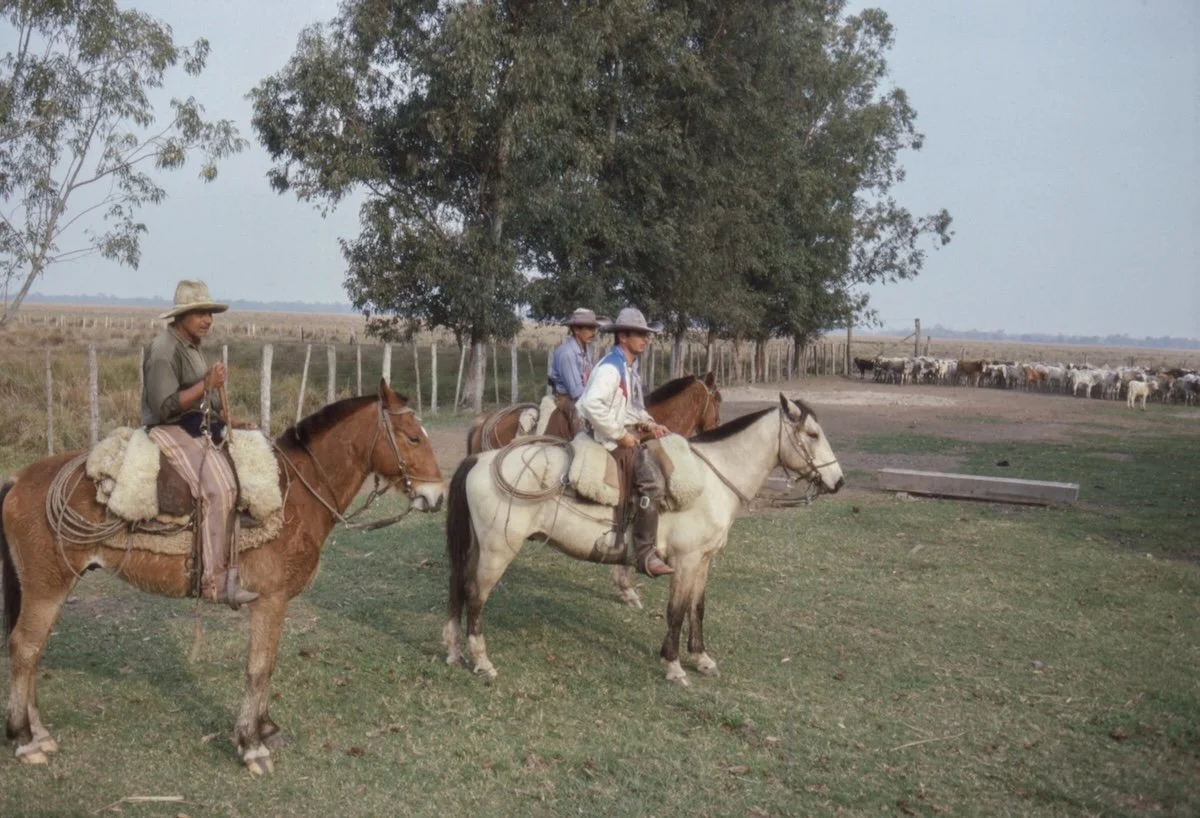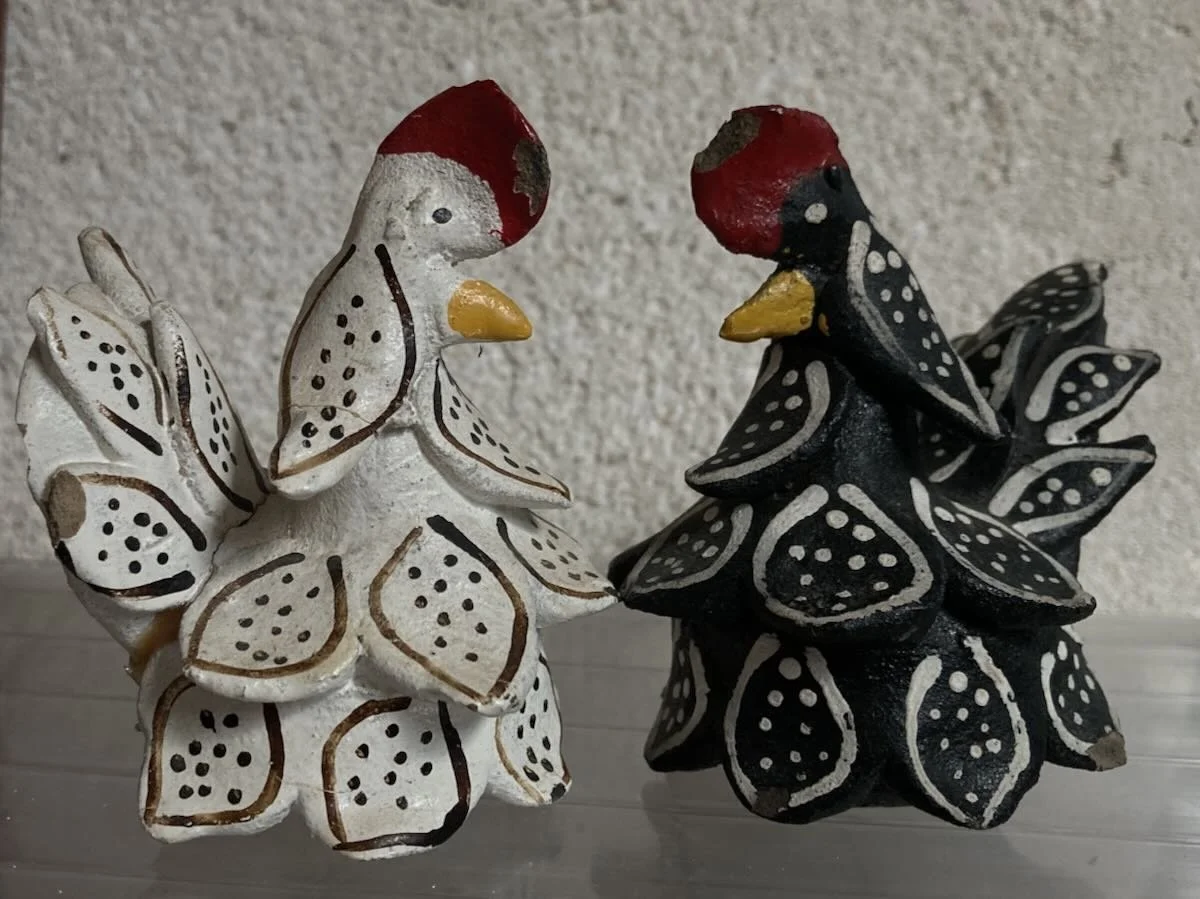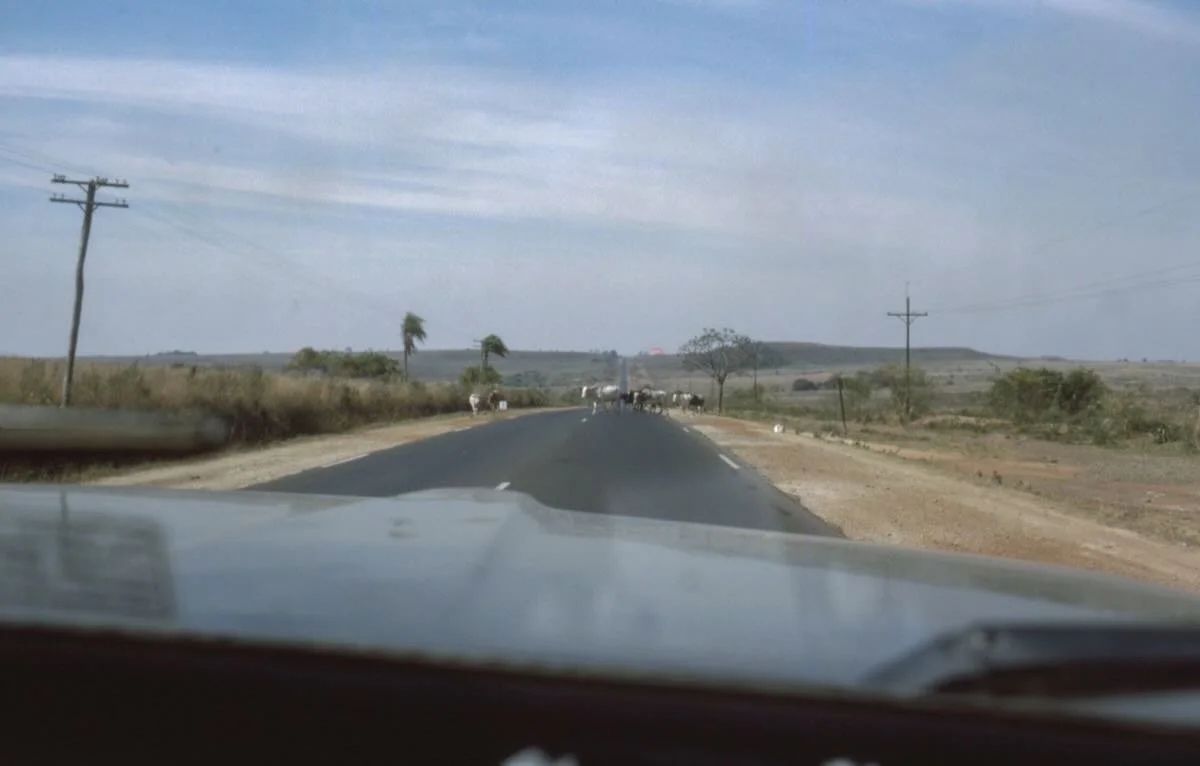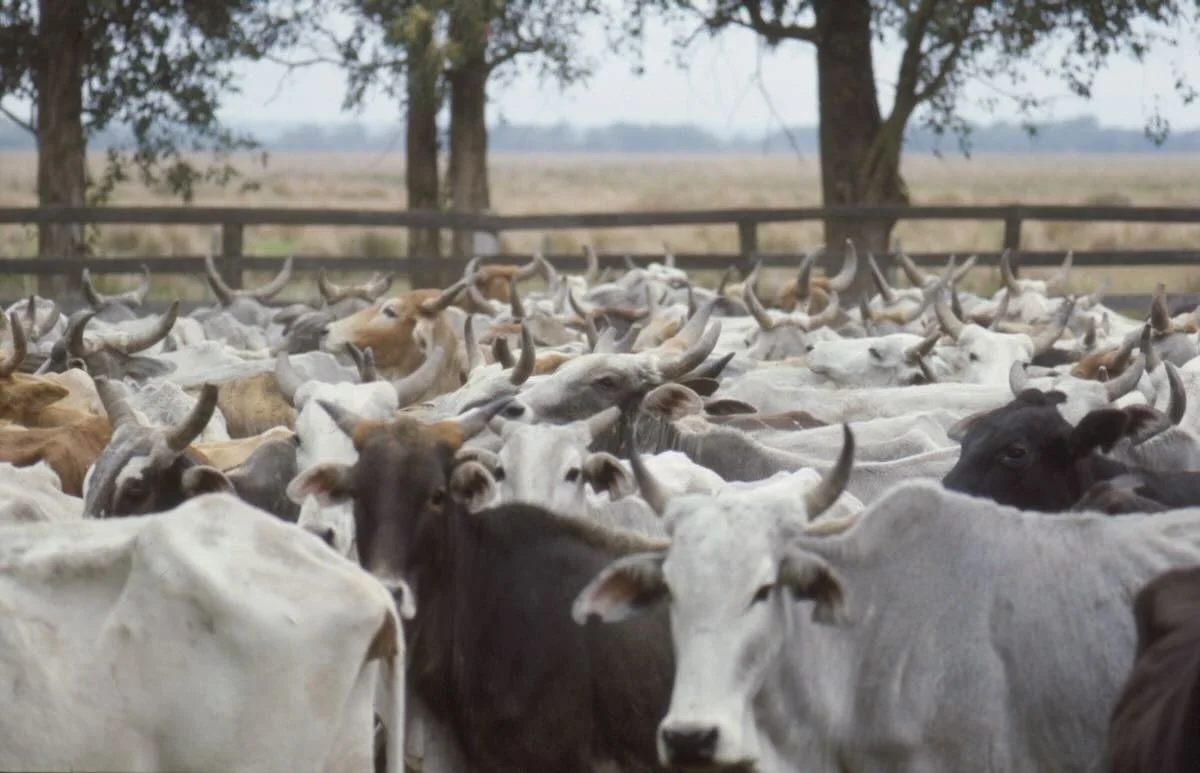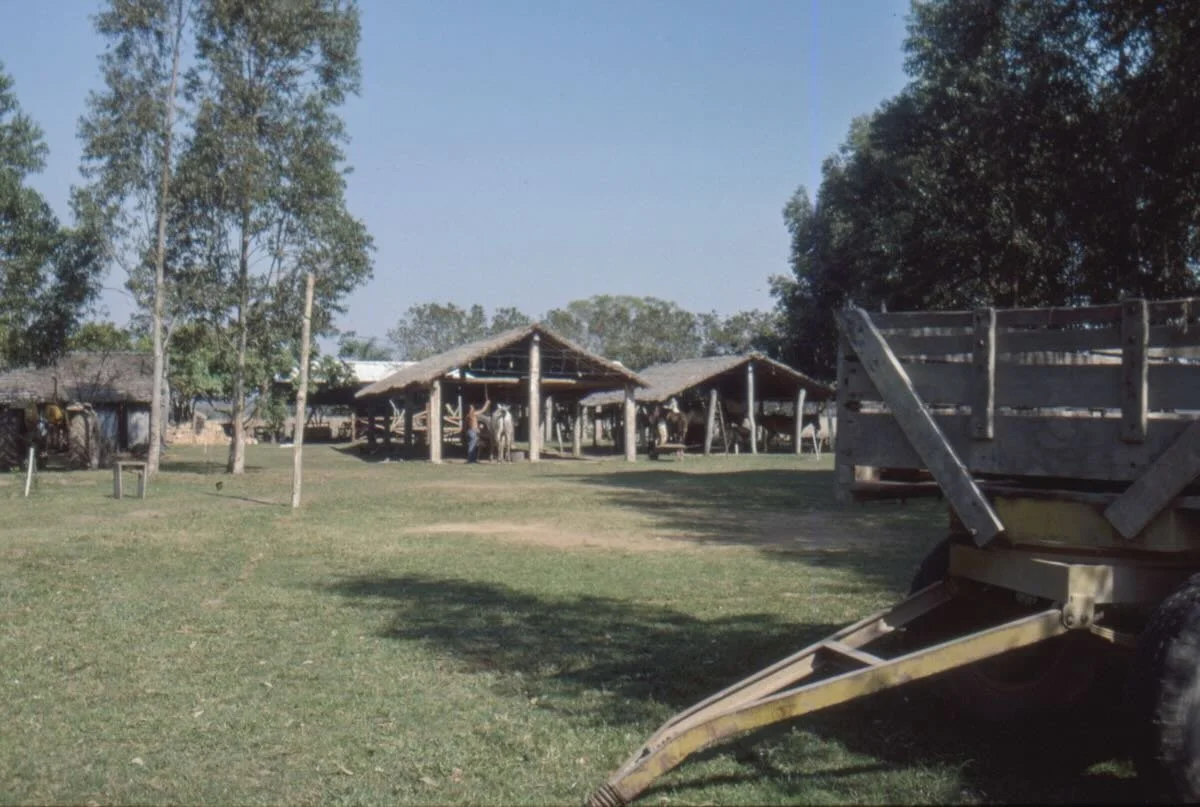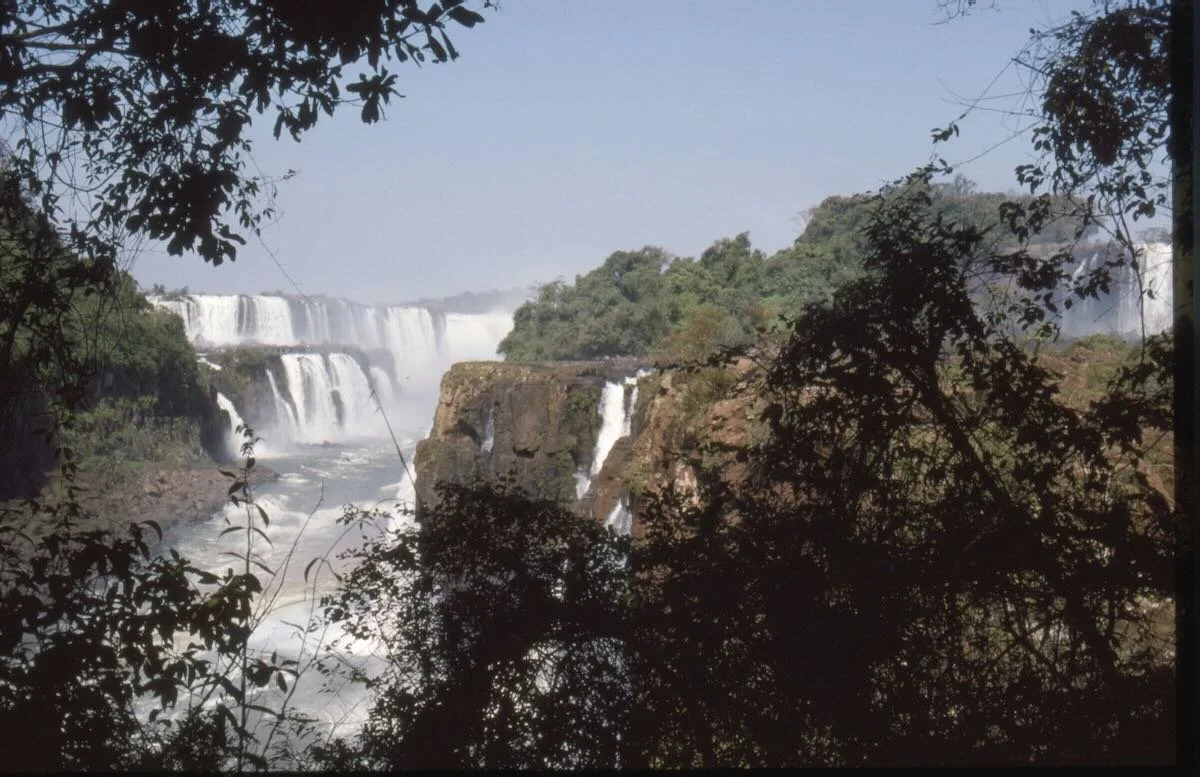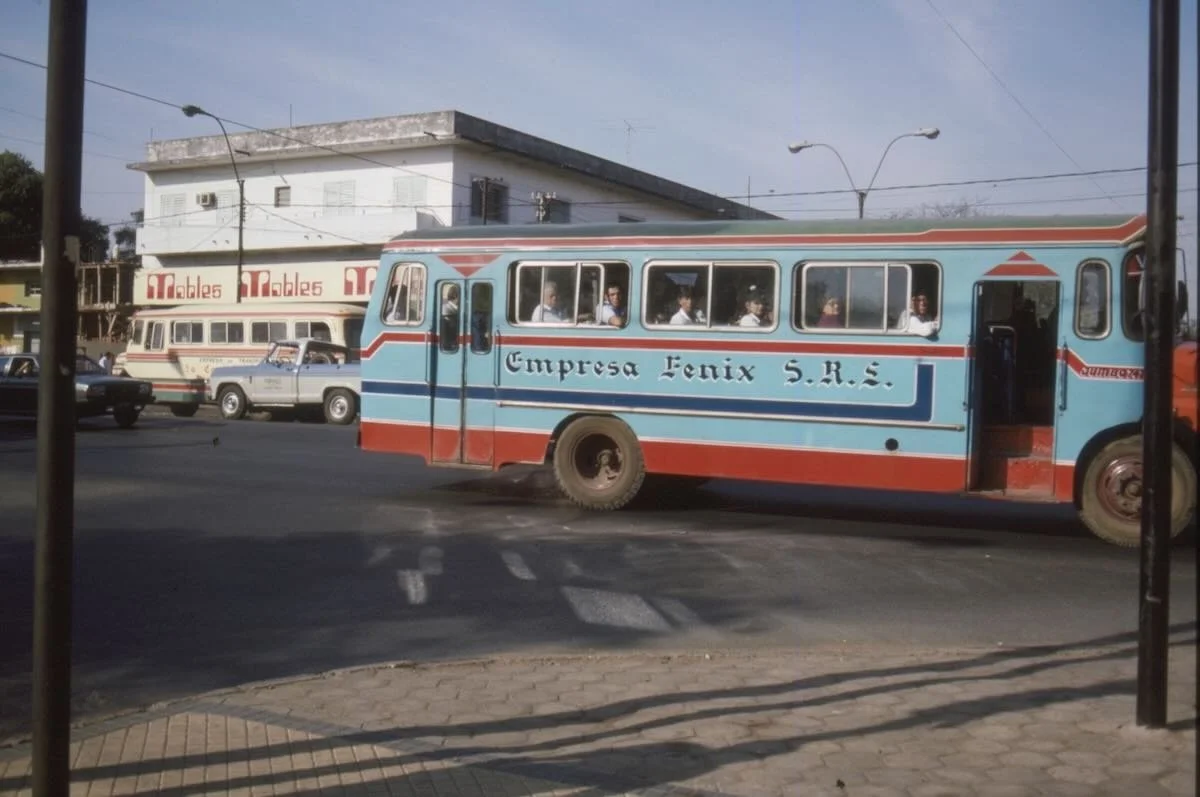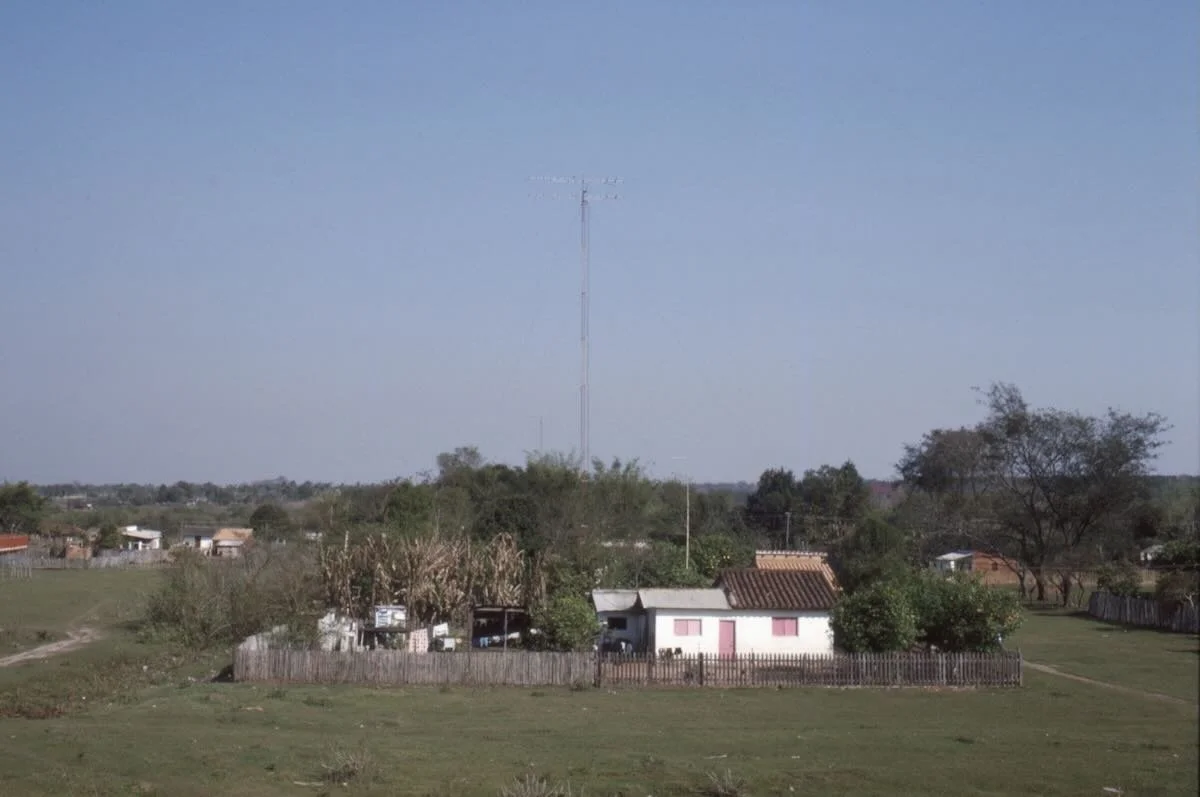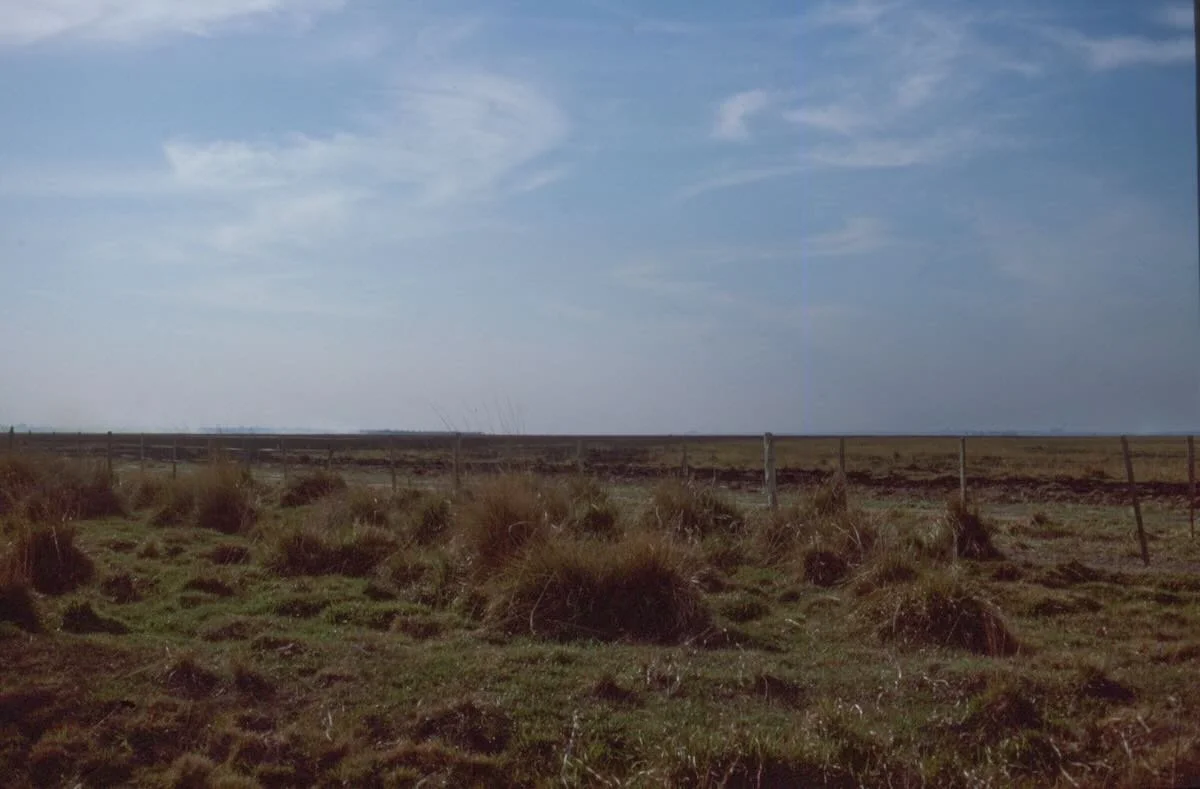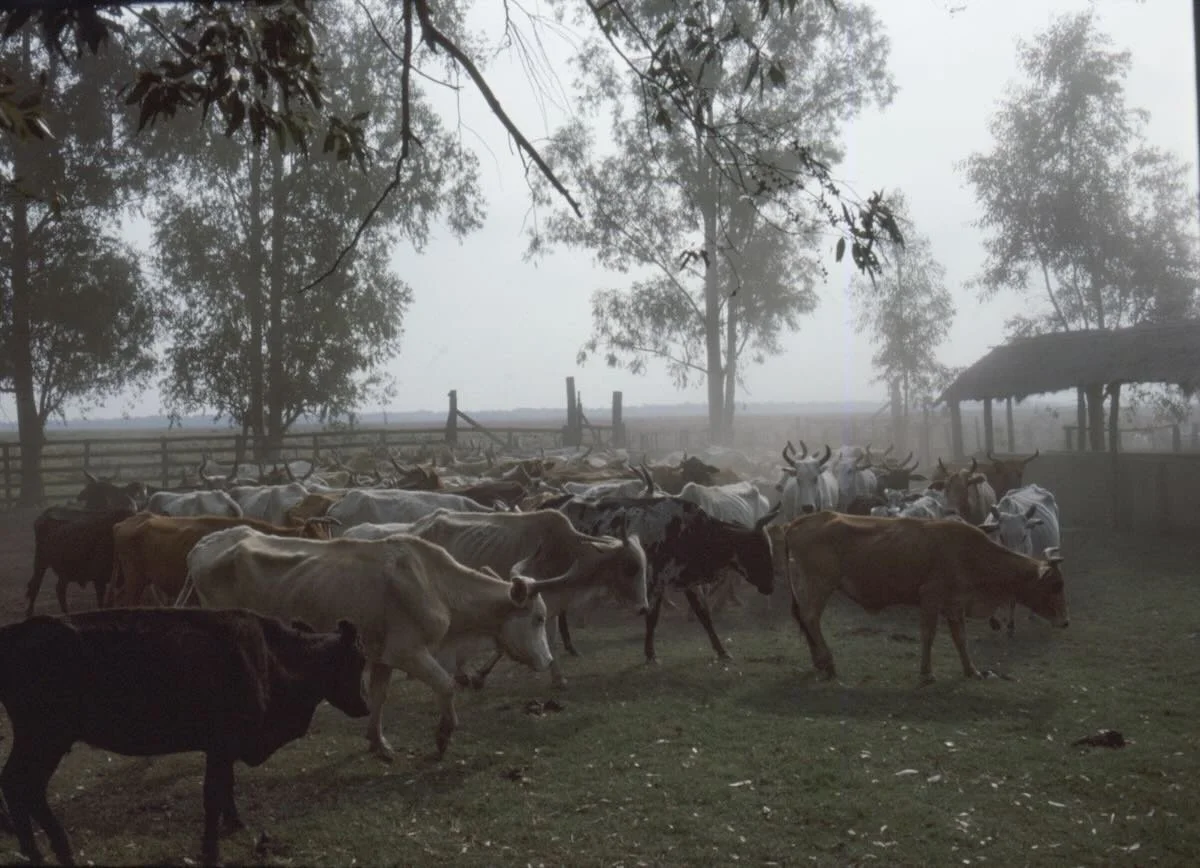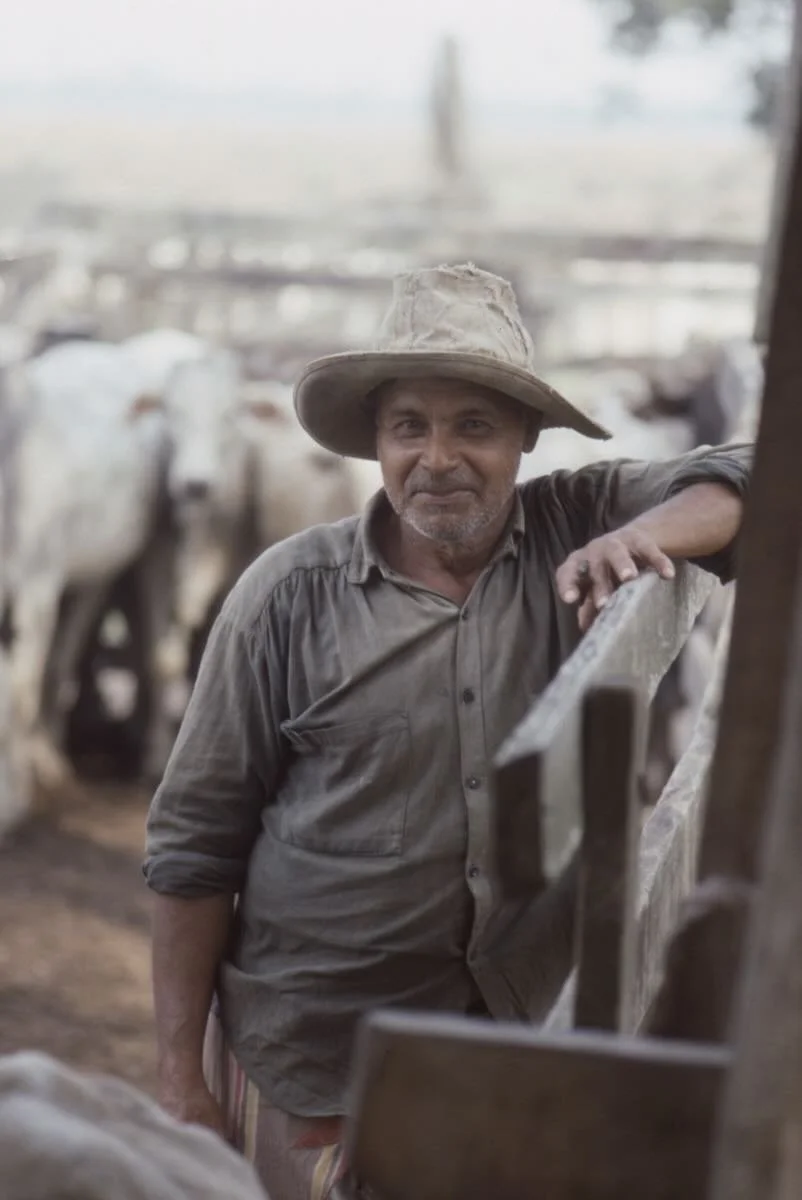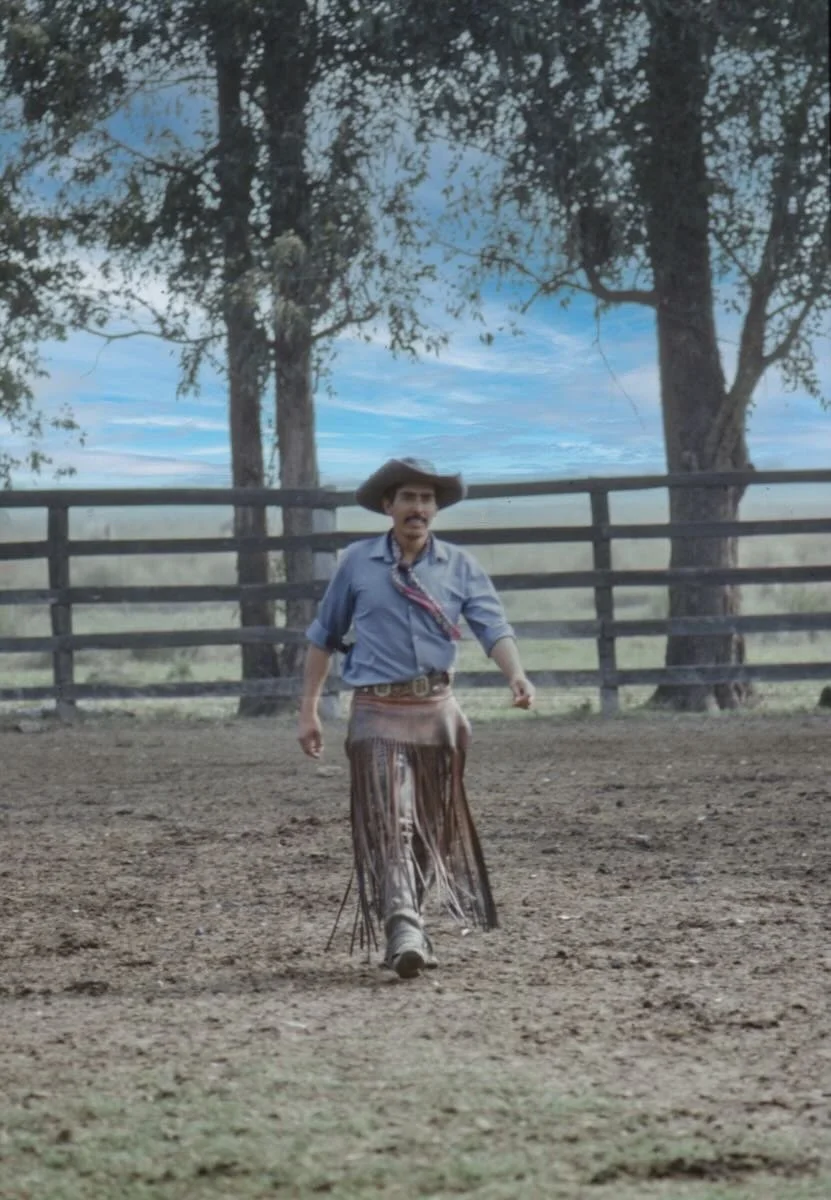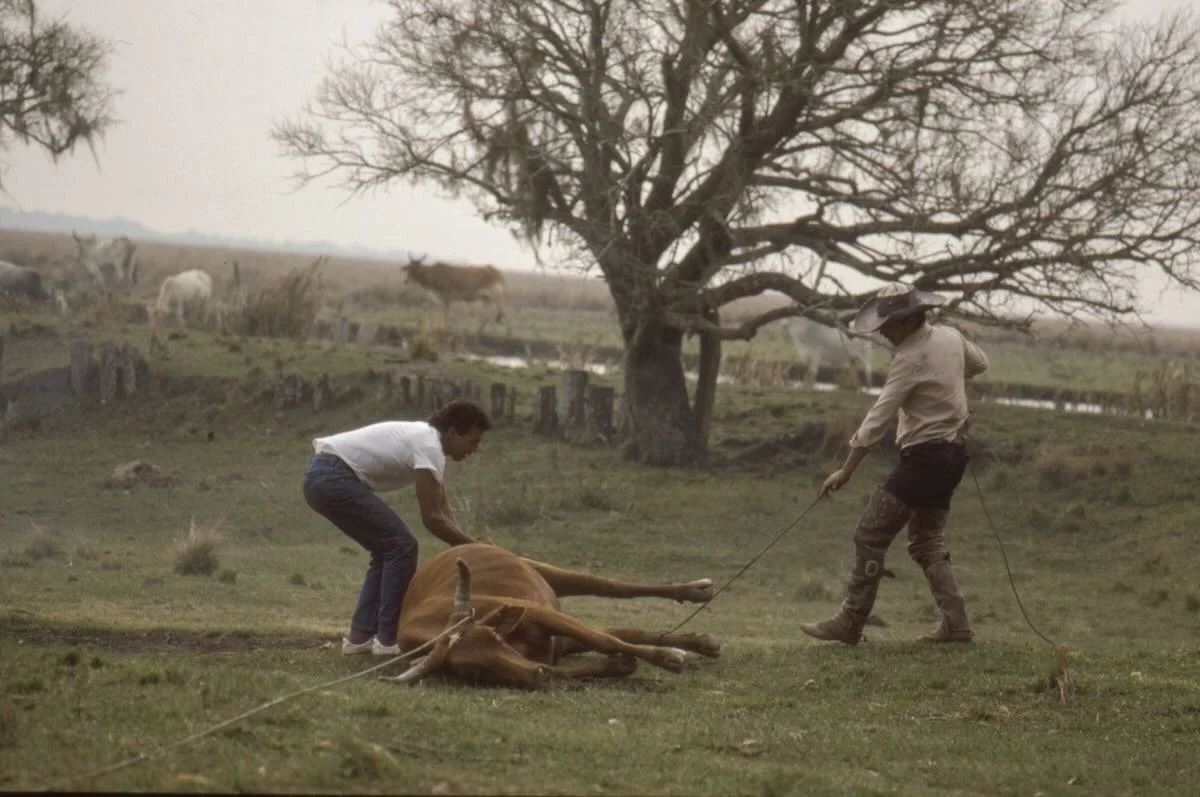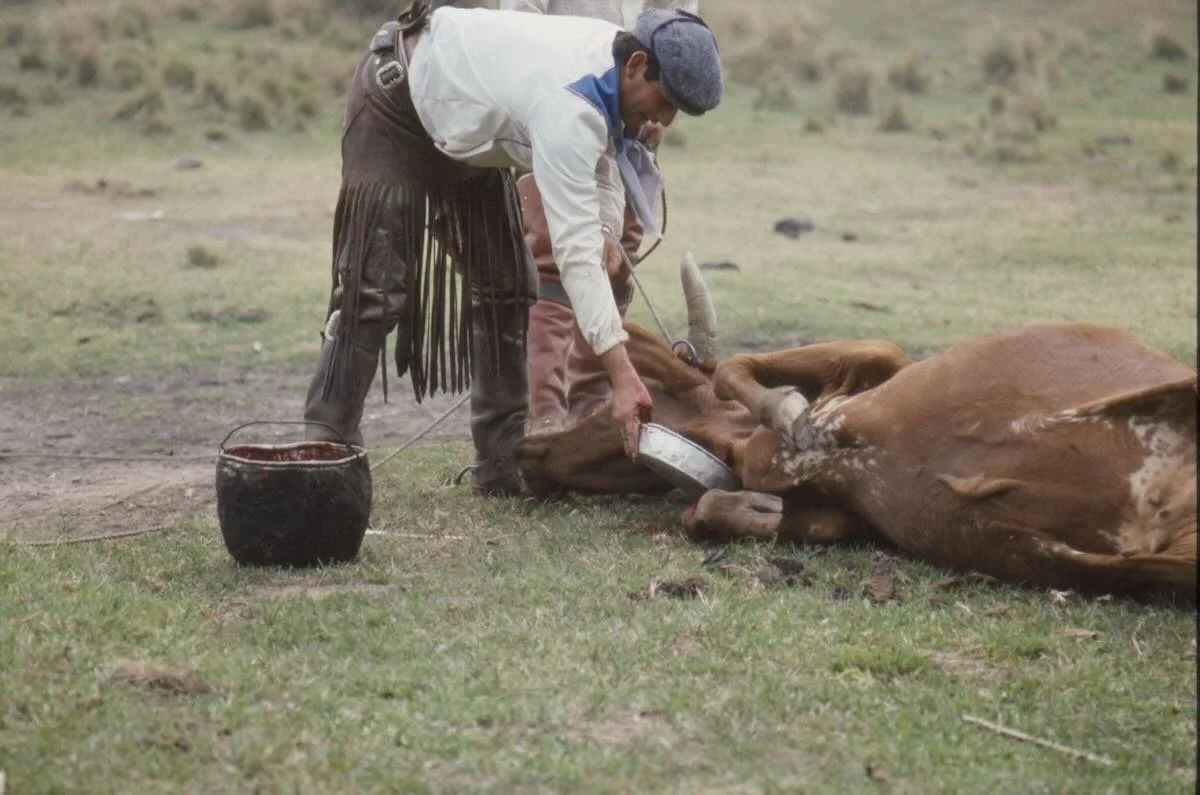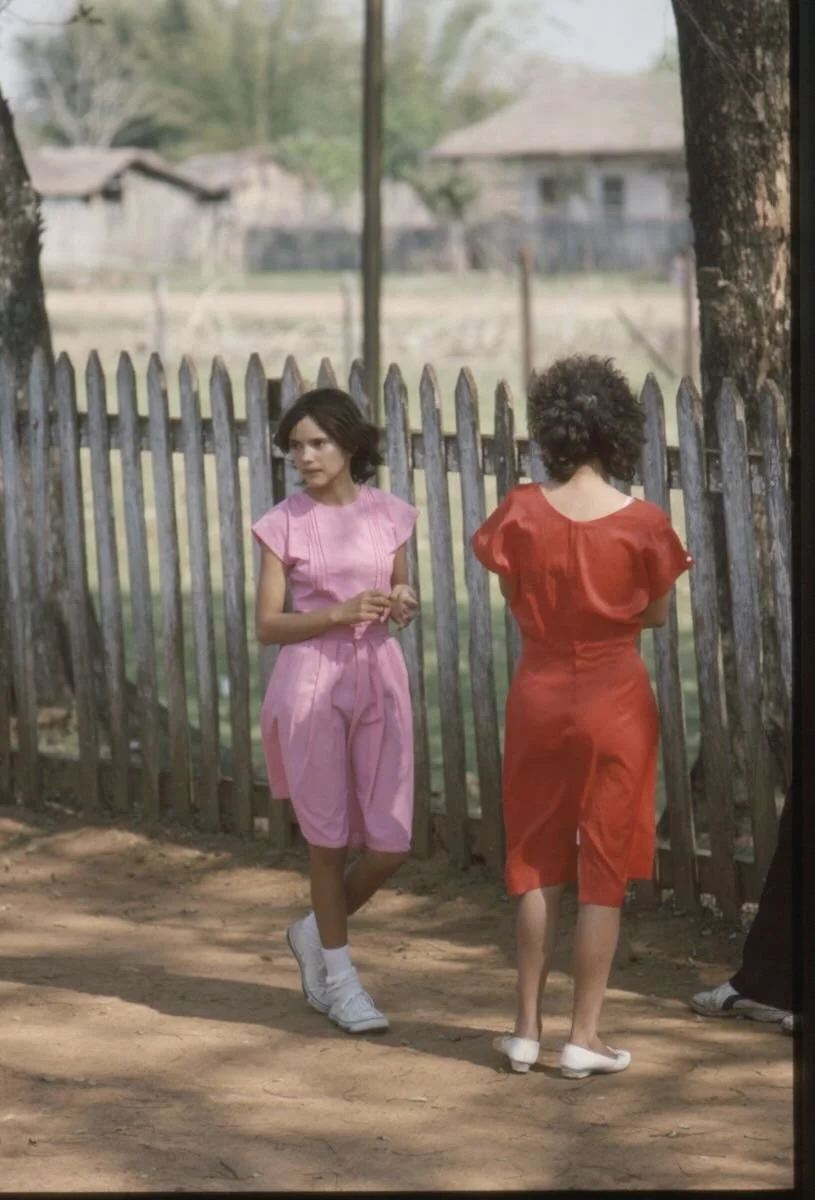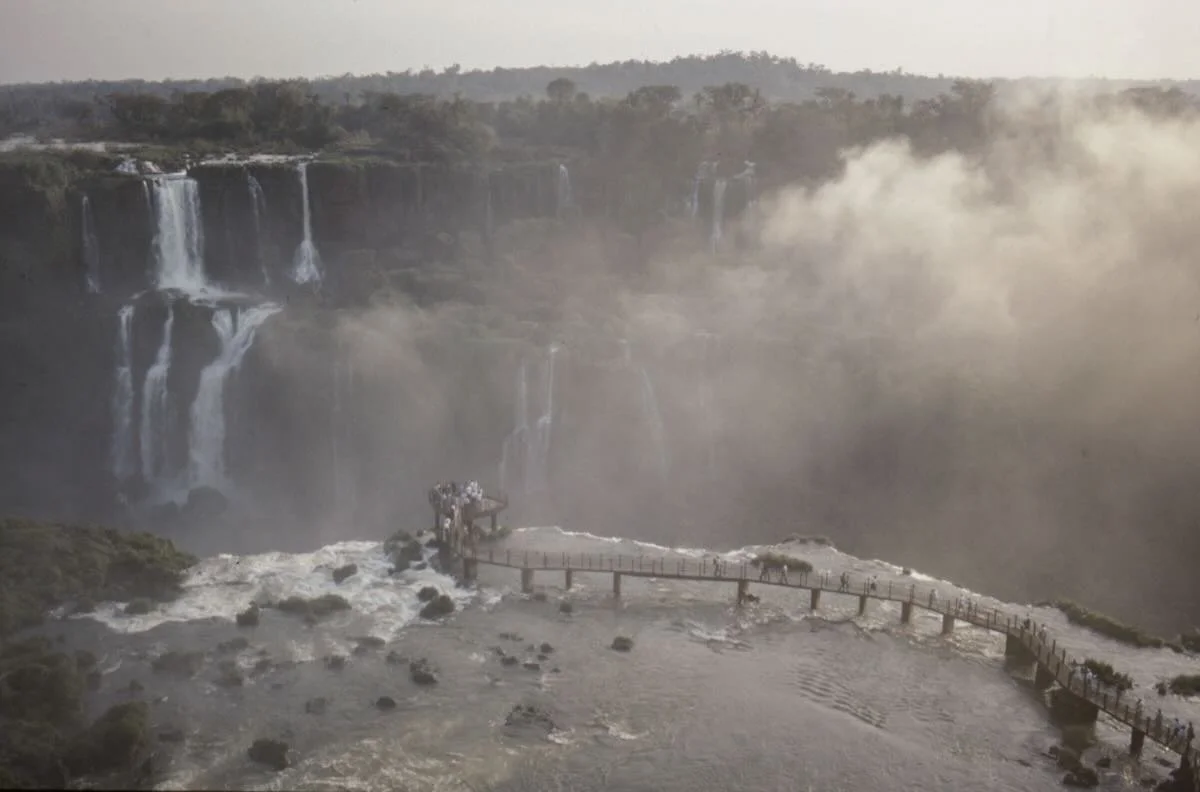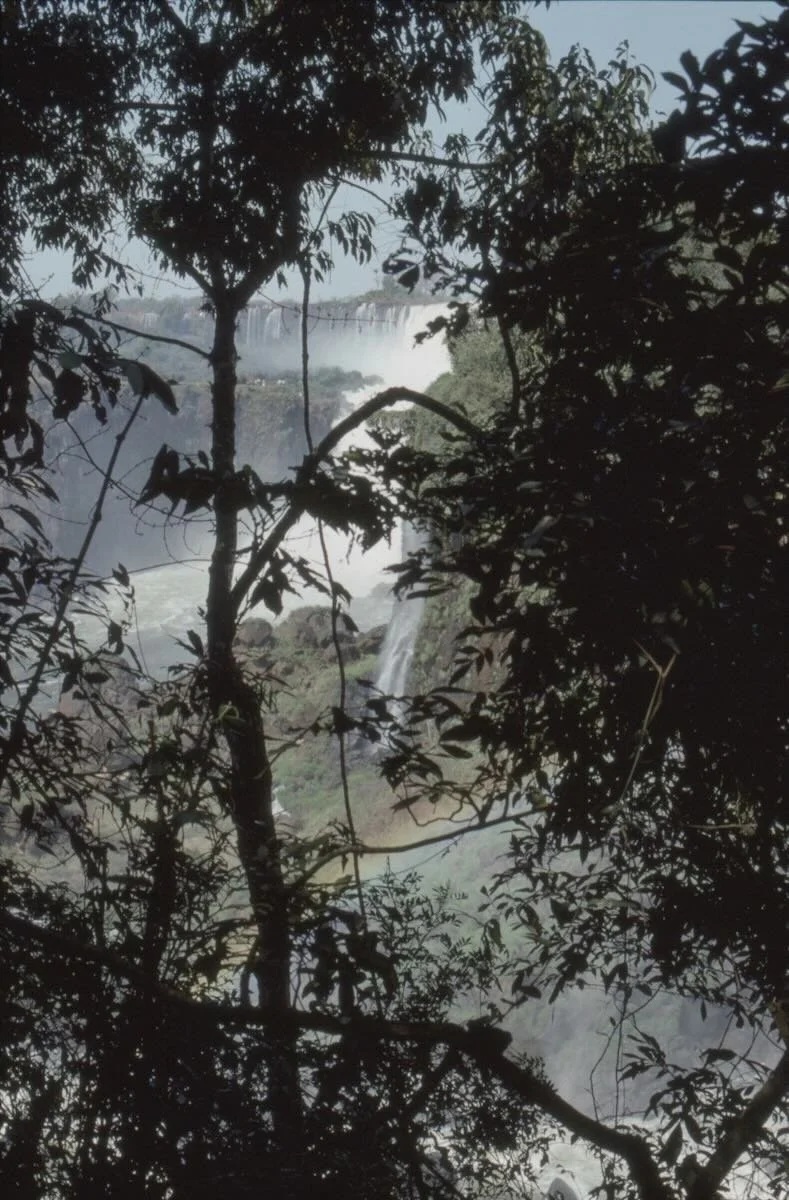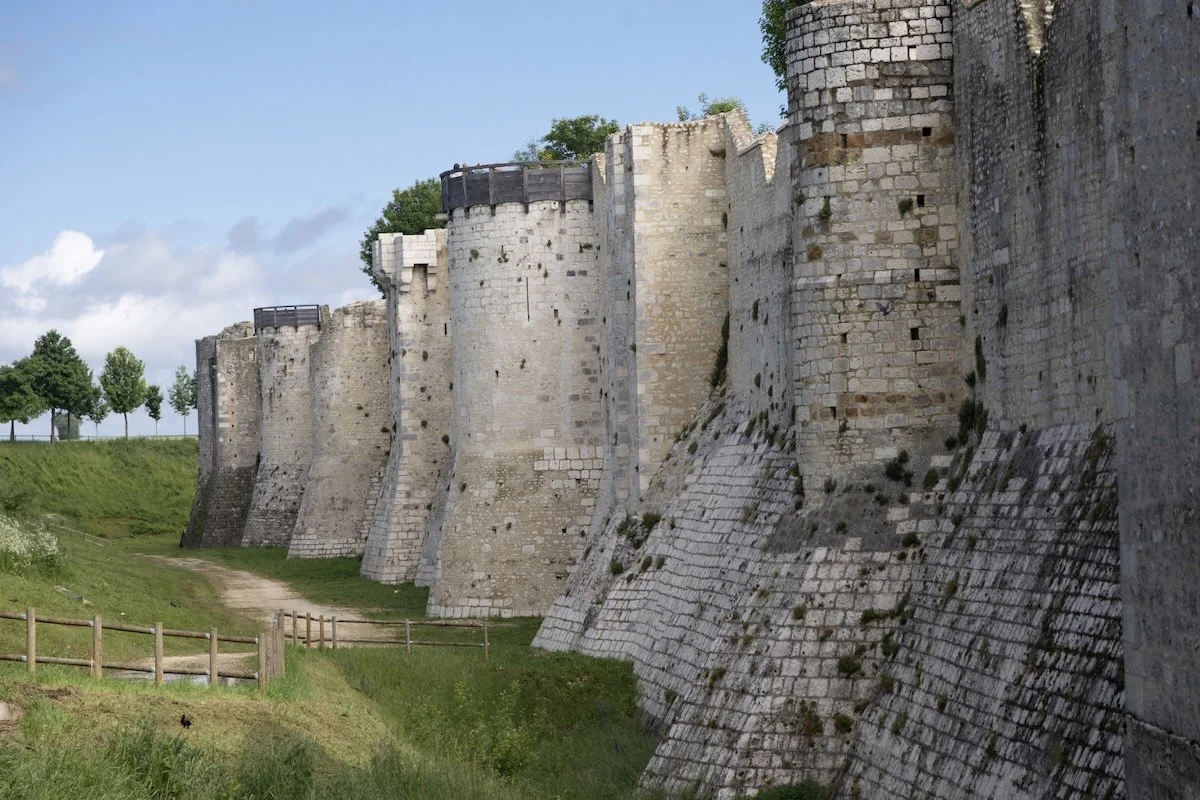Paraguay, back in the day
This trip dates back to July 1988 so in the intervening 37 years some things must have changed. I’d taken many Ektachrome slides with my trusty Canon AE1 and made extensive notes during my trip there to visit my friend, architect/artist/urban planner/museologist Oscar Centurion Frontanilla, who died suddenly in January 2025. This piece is dedicated to him.
A pink-flowering Lapacho tree.
The road into the city from Asunción’s spotless airport inaugurated just eight years earlier had some fabulous houses dotted along it with much more modest abodes wedged in between them. Some were very modern, others more Italianate in style, Oscar explaining that some of these wealthy homes belonged to now-married-to-senior-army officers-former-mistresses of Alfredo Stroessner (1912-2006), who holds the dubious honour of being Latin America’s longest-serving dictator: 1954-1989.
The low-lying city with just a few 20-storey skyscrapers dotted about, was awash in the pink, yellow and white blossoms of the Lapacho trees (Tabebuia impetiginosa or pink trumpet tree). The streets, lined with small shops, were full of people. I was amused to see that in addition to buses, the public transportation system included old Belgian trams. Sadly, this tram service was formally closed in November 1997.
The public transportation system clearly did not extend beyond the city limits as the next day just outside the city, the very flat countryside -- dotted with lots of tall, spindly coconut palms used to make soap and oil -- was full of neatly dressed, non-indigenous people walking on the roads with their own twist of humour: I saw a cripple wearing a T-shirt emblazoned “Build your Body”. There were many neat, white-washed houses which contrasted sharply with the red earth and everything looked very clean.
The cemeteries were very colourful and instead of crosses were filled with mini houses.
The partially submerged Chacarita shantytown
Oscar took me to the large Chacarita shantytown which lies just behind the Congreso Nacional (parliament). Parts of it were underwater because the river Paraguay was flooded, a frequent occurrence still today. According to Oscar the only people living in temporary cardboard houses were those whose homes were flooded. The others had baked-mud houses, some of which were painted, lined along streets which were either paved with slippery, black, shiny cobbles or left unpaved. A few areas were full of rubbish but there were no bad odours. Most of the shod, clean, well-dressed inhabitants were outdoors, chatting, and didn't seem to mind us, looking us straight in the eye and smiling if we smiled first.
Drawn by the sound of pop music we arrived at a child’s fifth birthday party complete with coloured balloons, and a gaudy-looking birthday cake being enjoyed outdoors by a host of children dressed in party finery – including two young sisters wearing impeccable white frothy dresses – whilst adults attempted to organise them into a game.
Today Chacarita is still very much there but the street art – there are, apparently, 500 murals in the shantytown notably in Caballero street – have inspired tour guides to take tourists there. Back in 1988 there were none!
These little hens are 7.5cm high
On our way to lunch at Lake Ypacaraí, which lies just east of Asunción, we detoured south of the city to visit Paraguay’s best known potter Rosa Britez (1941-2017) in Itá. I bought a couple of the pottery hens she is famous for which still grace one of my shelves. She was in her late 40s and expecting her 13th (and last) child. During our conversation she told me that in the countryside women are the bosses and their husbands are simply there to make babies!
This ñanduti is 61x36cm
We then stopped in Itauguá where I bought three pieces of ñanduti which I framed when I got home and are still the centrepiece of decoration in my kitchen.
One evening Oscar took me for a drink in the Zodiac restaurant/bar on the 13th floor of the “14 de mayo” building from which there was the best view over the capital. The building still exists but the Zodiac sadly does not. Neither does the iconic La Pergola restaurant where we had dinner. It was demolished in 2022.
Oscar’s family owned a ranch which, after the sudden death of his father which interrupted his master’s degree studies in Edinburgh, Scotland, he had to manage for his mother “although I don’t know one end of a cow from another” he complained. So he alternated two weeks on the ranch and two in the city doing his job as an architect and urban planner.
It was ranch time whilst I was visiting so we spent six hours bumping along in the pickup truck to get there. As we drove further south-east and deeper into the countryside so the houses changed from white-washed brick to vertical wooden panels. Every house had a porch supported by three pillars whether the house was baked mud roofed with thatch, or brick, tiled and complete with wrought-iron on the windows. Lapacho trees and citrus trees groaning with fruit abounded and I noticed that the go-to snack for Paraguyans was an orange. These, together with strawberries, oranges, bananas, and chipa bread (a delicious mixture of cassava starch, cheese, eggs and fat), were being sold on the roadside under the shade of banana trees.
The paved road heading south out of Asunción which we shared with cattle!
We first drove on a paved road across tree-covered hills before the land flattened into a tree-covered plain. But when we reached Villarrica where the paved road ended, the red dust begun on an endless, almost treeless plain. I felt as though we were travelling across a grassy sea. Some 35 km from the ranch the road became a twin track with deep potholes and rickety bridges made of planks parallel to the river and a few cross-planks upon which you were supposed to drive. And then, apparently swimming through this grassy sea, some hump-backed, sharp-horned cattle and more friendly looking dairy cows popped up. The silence was broken by bird song and I realised that this endless herbaceous plane was also a vast bird sanctuary. I saw birds of prey, many ibis, some enormous black, white and red storks and others I was unable to identify but which sounded like seagulls which reinforced the maritime impression.
A sea of cattle
Even here, absolutely in the middle of nowhere, the people I saw in the scattered villages were all shod and well dressed. Along the whole route there were buses picking up and dropping off school children, as many girls as boys, all dressed in impeccable white uniforms, clutching books. Those people not travelling by bus were careering along on Honda 125 motorbikes or, surprisingly for 1988, bicycles! But then there aren’t very many slopes to negotiate here...
I had noticed in previous travels through Central and Latin America that the state and even presence of road signs was a fairly reasonable indicator of the state of the country´s economy. In Paraguay the road signs, white on a green background, were, in 1988, all in good condition. Dangerous curves, crossroads, urban zones, and schools were all very well signposted and route directions also seemed fairly good. The driving, I noted at the time, "could be better" with drivers gleefully overtaking on the inside lane.
Guaraní, which is very widely spoken in Paraguay and is the nation’s second official language, is a very aspirated language making its speakers sound terribly breathless or as though they’ve bitten off the ends of their tongues! It explains why Paraguayan Spanish, or should I say “Panish”, tends to ignore the letter S. Oscar called me “Critina”!!
The Estancia Natividad
The ranch, the Estancia Ganaderia Natividad in Corralito San Ramon, Cazapá department, is an island in the midst of this relentlessly flat land and when the pickup truck's engine was switched off I was struck by the deafening silence.
I stayed at the ranch for a week, spending my days either riding out with Oscar and the seven permanent male ranch hands (plus one woman, Reina, married to one of the men and their two children, 7-year old Carmen and 10-month old Hernando) helping with the cattle. One day I watched in some horror as the cowboys caught a cow, killed it with a swift cut to the jugular vein, skinned it and then hung the meat up to dry on the line which more generally bore clean clothes! We ate that meat over the next few days but I found it a little tough! When I got saddle sore I stayed at the ranch house reading in the absolute quiet. When night fell the ranch generator provided a rather pleasant, cream coloured, slightly flickering light which we augmented with hurricane lamps and candles. There was plenty of hot, running water which was very welcome.
The steam locotmotive chugs into Doctor Moisés Bertoni station
I returned to Asunción by train catching it at the Doctor Moisés Bertoni station at 11:00. The country’s only train line, 367km long, linked the town of Encarnación (on Paraguay’s southern border with Argentina) to the capital. I’d opted to buy a first class ticket as it only cost me ₲1,300 (£1.17). Pulled by a wood burning locomotive brought to Paraguay by the British in 1855, the train, patrolled by two soldiers, was a bit of a disappointment. And made a dent in my favourable impression that everything in Paraguay was clean and tidy! The floor was littered with cigarette butts, sweet papers and other rubbish although somebody did later come through and sweep the floors. The windows and doors were all left open but this was hardly dangerous because the train crept forwards at what I estimate to be no more than 20 or 25 km/h given the distance we covered and the time it took us. But it did mean that when I arrived at destination, I was covered in red dust from head to toe!
The dining car was extremely old and creaky and the entire train rocked more than a small boat tossed on the high seas. I had a lunch of chicken and salad (two slices of cooked carrots, potato, tomato, a quarter of an egg, lettuce strips and one mineral water cost ₲1,400 (£1,26). The dining room had red laminated hinge tables with two seats on either side, the waiter wore a burgundy jacket, white shirt, black bowtie, and the cash desk formed the far end of the wagon. The ticket collectors wore beige uniforms with their names on the left breast pocket. The ticket sellers in the stations, which all seemed to be built along the same design, were always men, well dressed with ties.
A vendor at one of the many stops the train made
The train stopped frequently and at each station there were vendors of apples, ice cream, chipa etc. some of whom actually boarded the train before swiftly jumping off as it pulled out of the station. There were some very with-it dressed young girls who apparently came to the station simply to parade up and down once a week when the train came through. I noticed that many Paraguayans had lovely clear green or very light brown eyes. However many were also missing teeth whilst others had gold rimmed ones.
Asunción is an easy city to move around in as it´s arranged in a neat grid of blocks about 80m wide by 150m long. As Oscar had stayed at the ranch I used the buses and trams to get around and went to visit the XIXth century Nuestra Señora de la Asunción metropolitan cathedral. I’ve had the privilege of visiting many beautiful places of worship across the world and this one, I’m afraid I found ugly. Large khaki-coloured pillars with pale blue circles and ship wheels along the top divide the nave into three. Dark pilasters, pink arches and a flat ceiling painted in alternate strips of aqua and dark green completed the decor. The chestnut coloured wooden benches clashed with the burgundy, mustard and grey marbled floor. The altar appeared to be silver and the very elaborate, Dominican-style reredo is painted green and gold, a statue of the Immaculate Conception in the centre. All the doors and windows were open, the chandeliers were dusty and the lighting was provided by fluorescent tubes. Recent photos I’ve looked at suggest that only the fluorescent tubes have been modernised!
A week later, when Oscar had returned from the ranch and me from Rio de Janeiro, we spent a rainy morning (August in Paraguay is, of course, winter) at the Arte-Sanos gallery to see an exhibit by one of Paraguay’s foremost artists Ricardo Migliorisi (1941-2019) who was present and as Oscar knew him we spent some time chatting. We later visited the brand new Museum of Indigenous Art which is one of the three museums which make up the Centre for Visual Arts Museum del Barro. The other two are the Contemporary Art Museum and the Popular Art Museum but in 1988 these did not exist.
At the intersection of Paraguay’s borders with Argentina and Brazil is the nation’s second largest city, Ciudad del Este, 327kms due east of Asunción, from which it couldn’t be more different! When Oscar took me there in 1988 it was called Puerto Stroessner and – although it’s in the east – it was really the wild west: dangerous and creepy and like nowhere I’d been before or have been since. I got the feeling that anything could be bought or sold there. The whole city is a duty-free zone, the biggest in Latin America, so Brazilians cross over the Puente Internacional de la Amistade (International Friendship Bridge) to buy goods which are considerably cheaper in Ciudad del Este than at home. I even saw some people carrying a washing-machine across the bridge! Men crept up to you to ask if you wanted to exchange money, there were hundreds of shops selling everything from fake Rolexs to real Breitlings via cameras, pharmaceutical goods and goodness knows what else. I felt so unsafe I took no photos.
The Iguazu falls seen from Argentina
But the town was not the objective of our seven-and-a-half hour drive from Asuncion (at an average speed of just 55.6 km/h) but rather the famous Iguazu Falls which lie just 40kms SE of the city right along the border between Brazil and Argentina. We stayed overnight at the Hotel Ilha de Capri in Foz, Brazil, which is now the Iguassu Flats Hotel and were able to watch the sun setting behind the falls.
At my insistence, because I thought it unlikely I would ever set foot here again, we spent most of the next day on the Argentinian side of the Iguazu Falls. That was a smart move because most of the falls actually lie in Argentina and I found the views from this side to be much better!
